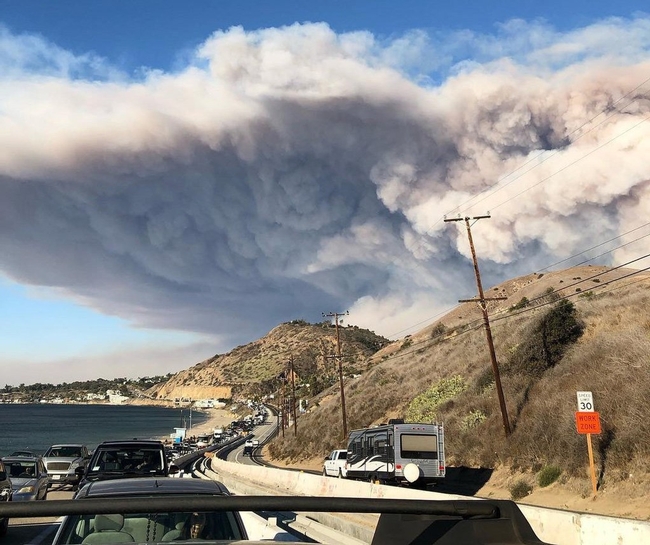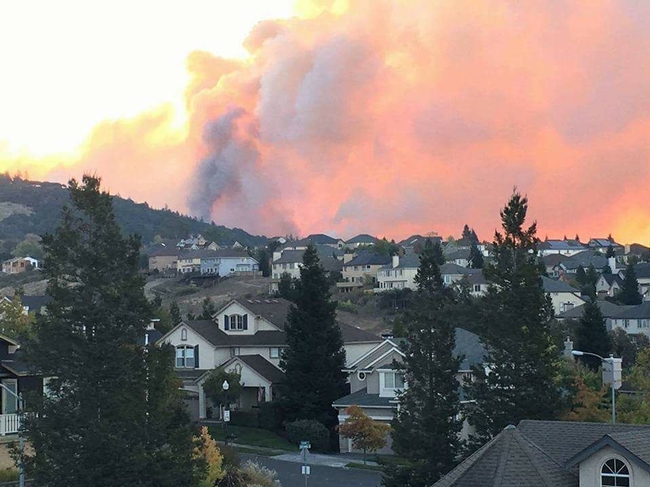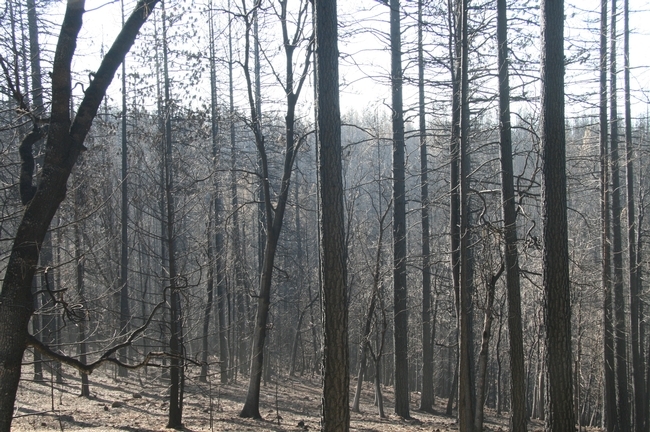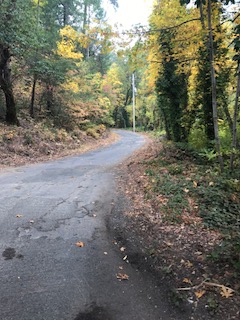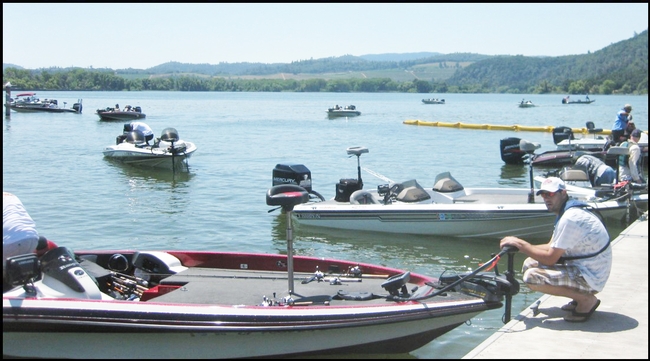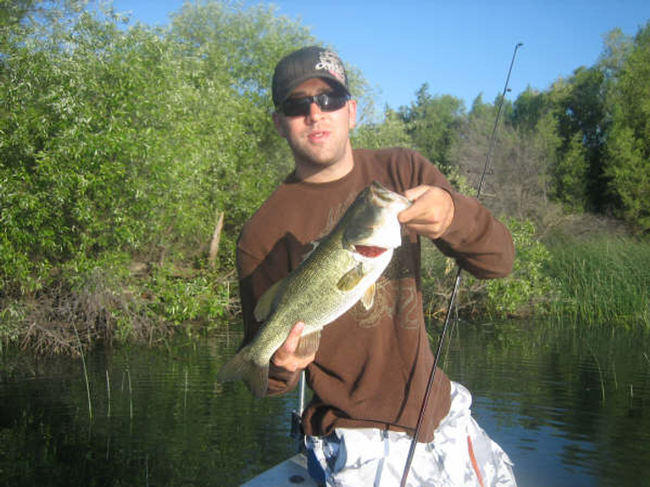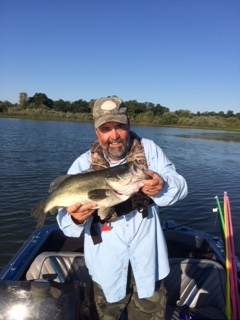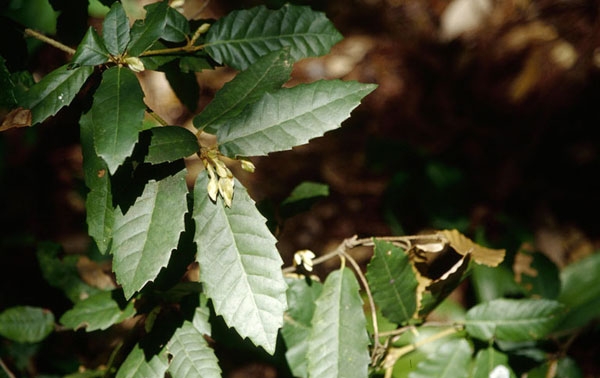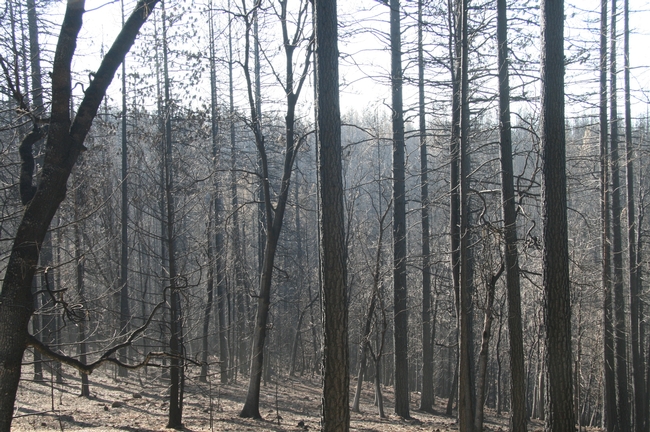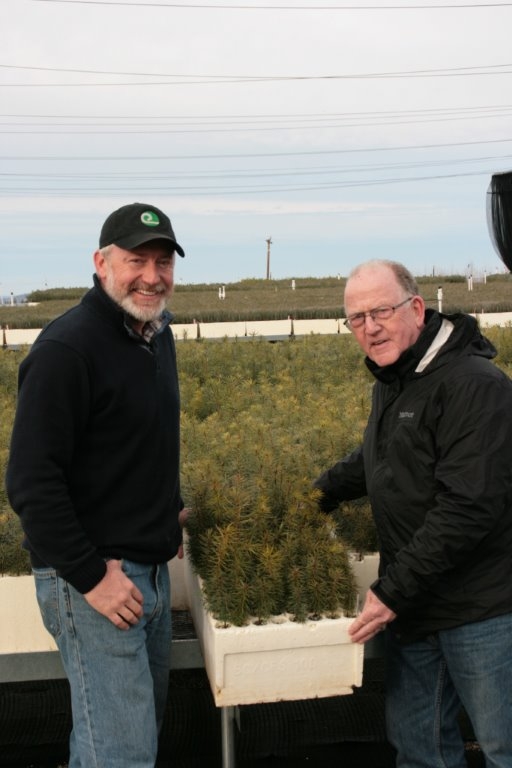Posts Tagged: Greg Giusti
UC fire scientists provide invaluable expertise to media during fire tragedies
The recent outbreak in California of two devastating fires - the Woolsey Fire in Ventura and Los Angeles counties and the Camp Fire in Butte County - are being covered extensively by the news media. UC Agriculture and Natural Resources fire scientists provide a valuable service by making themselves available to share their expertise during these tragedies. Below are a sampling of recent fire stories with comments from UC ANR sources.
Why Wildfires Are Burning So Hot And Moving So Fast
(NPR) Kirk Siegler
…One recent study predicted several million homes built in the West are at immediate risk. Susie Kocher is a forester with the University of California's Cooperative Extension service here in the Sierra.
“We haven't caught up, and to retrofit our existing housing stock to fend off embers is a long-term, expensive proposition.”
These wind-driven fires often carry air and embers that land on a roof or get sucked into a vent long after the main wall of flames has passed through. In fact, that's when most homes actually burn in wildfires.
“Even areas like Paradise that have been inhabited for 140 years as more vulnerable than they used to be. And that's not because there's new development but because there's a new climate around the old community.”
And that brings us to one of the biggest factors: climate change. Droughts are longer and more severe. The snow is melting quicker. The fire seasons are longer if not year-round.
http://www.capradio.org/news/npr/story?storyid=668163465
As wildfires grow deadlier, officials search for solutions
(Associated Press) Matthew Brown and Ellen Knickmeyer, Nov. 14
…"There are ... so many ways that can go wrong, in the warning, the modes of getting the message out, the confusion ... the traffic jams," said Max Moritz, a wildfire specialist with the University of California Cooperative Extension program.
As deadly urban wildfires become more common, officials should also consider establishing "local retreat zones, local safety zones" in communities where residents can ride out the deadly firestorms if escape seems impossible, Moritz said.
… In the mid-20th century, California ranchers burned hundreds of thousands of acres annually to manage their lands, said Lenya Quinn-Davidson, director of the Northern California Prescribed Fire Council.
That was phased out in the 1980s after California's fire management agency stepped in to take over the burns, and by the last decade, the amount of acreage being treated had dropped to less than 10,000 acres annually, Quinn-Davidson said.
Former agricultural land that rings many towns in the state became overgrown, even as housing developments pushed deeper into those rural areas. That was the situation in the Northern California town of Redding leading up to a fire that began in July and destroyed more than 1,000 homes. It was blamed for eight deaths.
"You get these growing cities pushing out - housing developments going right up into brush and wooded areas. One ignition on a bad day, and all that is threatened," Quinn-Davidson said. "These fires are tragic, and they're telling us this is urgent. We can't sit on our hands."
http://www.kulr8.com/story/39483128/fatal-california-fires-spur-search-for-solutions
Trump and Brown stir up rhetoric on wildfires but overlook pressing problems
(LA Times) Bettina Boxall, Nov. 14
… Similarly, UC Berkeley fire scientist Scott Stephens said that although climate change is playing a role in wildfire growth, he worries that a focus on global warming can leave the public thinking that “there's really nothing to be done.”
In fact, he said, “Communities could still be better prepared.”
http://www.latimes.com/local/lanow/la-me-fire-policy-trump-brown-20181114-story.html
How Does California's Wildlife Cope With Massive Wildfires?
(Atlas Obscura) Anna Kusmer, Nov. 13
While many animals are indeed displaced by wildfires, it's important to note that fire is not wholly bad for landscapes in an ecological sense. In fact, many California ecosystems rely on fire to thrive. “Fire in the human sense can often be catastrophic, but it's not necessarily the same for animals,” says Greg Giusti, a retired University of California researcher and an expert on the relationship between wildfires and wildlife. He says California wildlife have evolved to respond to fires, and can even sometimes benefit from the disruption. “It's harsh out there, but you know these animals have evolved to survive in that hostile environment.”
There are a variety to survival tactics that California wildlife will use, says Giusti. For example, birds are easily able to fly away and are usually not impacted as long as fires don't occur during the spring when they are nesting and raising their offspring.
https://www.atlasobscura.com/articles/how-does-californias-wildlife-cope-with-massive-wildfires
The Manmade Causes Of California's Endless Fire Season
(OnPoint) Meghna Chakrabarti, Nov 13
California's endless fire season. Whether it's climate change, development or forest management, we'll look at the causes — all manmade.
Guests:
Scott McLean, deputy chief, chief of information for the California Department of Forestry and Fire Protection.
Ryan Lillis, reporter for the Sacramento Bee who has covered most of Northern California's fires for last 12 years. (@Ryan_Lillis)
J. Keith Gilless, professor of forest economics at University of California, Berkeley and chair of the California Board of Forestry and Fire Protection on Cal Fire's policy board.
Glen MacDonald, professor of geography at University of California, Los Angeles who has spent decades studying climate and the effects of wildfires. He and his family were among the hundreds of thousands of people who evacuated their homes because of the Woolsey Fire. (@GlenMMacDonald1)
http://www.wbur.org/onpoint/2018/11/13/californias-endless-fire-season-climate-change
California Must Better Prepare For The Inevitability Of Future Fires (reprint of The Conversation originally published in August)
(Pacific Standard) Max Moritz, Naomi Tague & Sarah Anderson, Nov 13
Wildfire has been an integral part of California ecosystems for centuries. Now, however, nearly a third of homes in California are in wildland urban interface areas where houses intermingling with wildlands and fire is a natural phenomenon. Just as Californians must live with earthquake risk, they must live with wildfires.
https://psmag.com/environment/california-must-better-prepare-for-future-fires
Forest management debate
(KTVU) Heather Holmes, Nov. 12
In a live interview, Bill Stewart, UC Cooperative Extension specialist at UC Berkeley, said,
“It was actually on the private land that we saw better performance in terms of being able to put out the fire quicker and a lot less smoke being produced. There is a package of vegetation management and fire suppression on private lands that have proved to be more effective than what's being used on federal land.
“What we found is about half the difference comes from the private land managers do more aggressive timber harvesting and some of that profit they spend to reduce the shrubs and fuels that are on the ground because they have that cashflow. They're protecting their long-term assets. The other half is CALFIRE is much more aggressive when it comes to fire suppression in forests or shrublands.
http://www.ktvu.com/news/372545595-video
Trump's Misleading Claims About California's Fire ‘Mismanagement'
(New York Times) Kendra Pierre-Louis, Nov. 12
…Mr. Trump is suggesting that forest management played a role, but California's current wildfires aren't forest fires.
“These fires aren't even in forests,” said Max Moritz, a wildfire specialist at the University of California, Santa Barbara.
…“We have vulnerable housing stock already out there on the landscape. These are structures that were often built to building codes from earlier decades and they're not as fire resistant as they could be,” Dr. Moritz said. “This issue of where and how we built our homes has left us very exposed to home losses and fatalities like these.”
https://www.nytimes.com/2018/11/12/us/politics/fact-check-trump-california-fire-tweet.html
California's year-round wildfire threat: Why aren't communities doing more?
(SF Chronicle) Peter Fimrite and Kurtis Alexander Nov. 10,
…“To have a president come out and say it's all because of forest management is ridiculous. It completely ignores the dynamic of what's going on around us.” said LeRoy Westerling, a climate and fire scientist at UC Merced, who blamed the increasing number of fires on rising temperatures and more variable precipitation, leading to longer spells of dry weather.
…“It's like a tragic replay of last year, with strong winds in both Northern California and Southern California blowing fire,” said Max Moritz, a wildfire specialist at the Bren School at UC Santa Barbara, recalling the 2017 Wine Country fires and the Thomas Fire, which burned through Ventura and Santa Barbara counties in December.
…“We had a lot of discussion after the fires last year about the liability issue with utilities, but it's interesting to see what didn't happen,” Moritz said. “Nobody has talked about mapping neighborhoods and homes in fire-prone areas like they do in flood plain hazard zones, engineering resilience into communities, or building a little smarter.”
…Everybody agrees the situation is dire. Fire officials blame shorter winters, hotter temperatures and drier vegetation, but very little is being done to improve the situation, said Scott Stevens, a professor of fire science at UC Berkeley.
“There is an under-appreciation of fire risk in a lot of communities,” Stevens said. “It feels like we can do better at allowing local communities to access information, reduce their vulnerability and understand their vulnerability a little bit more.”
Stevens urged the creation of cooperative programs at his and other universities that would allow local government officials to collaborate with fire experts on safety planning.
California's most destructive wildfire should not have come as a surprise
(LA Times) Bettina Boxall and Paige St. John
…“We have these Santa Ana-like events happening in places that are appearing to catch people by surprise,” said Max Moritz, a cooperative extension wildfire specialist at UC Santa Barbara's Bren School. “But they shouldn't be catching people by surprise.”
“These are areas that have burned before,” he said. “And if we were to go back and do the wind mapping, we would find that at some intervals, these areas are prone to these north and northeasterly Santa Ana-like events.”
… “We have all kinds of tools to help us do this smarter, to build in a more sustainable way and to co-exist with fire,” he said. “But everybody throws up their hands and says, ‘Oh, all land-use planning is local. You can't tell people that they can't build there.' And the conversation stops right there.”
http://www.latimes.com/local/lanow/la-me-camp-fire-science-20181110-story.html
Lessons to be learned from Northern California fires
It's Deja Vu all over again
- Yogi Berra
Once again I'm asked to provide some perspective on yet another catastrophic situation affecting the North Coast. In 2015, it was the Valley Fire. In 2016, it was the Clayton Fire. This year there are so many fires I'm having difficulty recalling their names...14 at last count.
The cause for these 2017 conflagrations will be apparent once the elements of the fires are assessed. Tornadic winds hitting 50 mph Sunday, October 8, will most likely have started most if not all. Winds of this intensity can ignite fires by impacting electrical infrastructure by breaking lines and causing transformers to explode. The cause of the fires will come out in time. Thick stands of vegetation, the result of mid-20th century land management practices, years of fire suppression, homes built in rural locations in steep terrain, old legacy roads too small to accommodate modern fire-fighting equipment, and exurban development without the necessary resources to address fire prevention. All this leads to almost impossible conditions to arrest a fire being pushed by wind.
I would argue there is no better fire-fighting force in the world than those found in California. What these men and women do is nothing short of extraordinary. But they are faced with an impossible task in the absence of an equally focused program of fire prevention.
What have I learned from Lake County as a result of the Valley and Clayton fires?
The Lake County fires have provided insights that can help with the recovery and reconstruction of the most recent events. Specifically, resources must be secured to assist landowners and communities in better incorporating fire resilience into local rural and suburban planning and projects, to prepare for the eventuality of another fire by creating and maintaining conditions that allow the fire to be controlled before getting out of hand. Admittedly, the recent fires were wind-driven events that became uncontrollable. However, these fires are the exception to the rule. There are hundreds of fires a year in California that are quickly controlled and extinguished. Fire resiliency must incorporate plans and projects that can address less catastrophic conditions, in the hopes of arresting a fire before it becomes a conflagration.
None of this will be easy or inexpensive. But neither is fighting hundreds of thousand acres of wildland fires every year.
Admittedly, the weather conditions responsible for these fires may negate the best plans and efforts. But again, those conditions are the exception to the rule.
For every acre burned this year there are ten more, in the same condition, that didn't, providing next year's opportunity for a conflagration. The road forward to address California's wildland fire threat is long, and full of twists and turns. But as with all long journeys, each begins with the first step.
Greg Giusti is a UC Cooperative Extension advisor emeritus specializing in forests and wildlands ecology.
Communities reel in revenue from sport fishing
In August, the Clayton Fire burned nearly 4,000 acres and 198 homes and businesses in Lake County. In 2015, the Valley, Rocky and Jerusalem fires together burned 170,623 acres and destroyed 2,078 structures. But the devastating Lake County wildfires haven't put a damper on fishing at Clear Lake, which reels in roughly $1 million to the community annually, according to a report from UC Cooperative Extension.
“The lake's economic attraction has not been negatively impacted by the fires,” said Greg Giusti, UC Cooperative Extension advisor in Lake County and author of the study. “The fish are fine and the anglers keep coming.”
Giusti's report outlines the economic value of fishing on Clear Lake, highlighting the importance of the outdoor pastime to the local economy.
Bass, crappie, catfish and bluegill thrive in Clear Lake's warm water, with its rich plant life and abundant food supply.
“People come from all over the country to fish Clear Lake,” said Giusti, who studies fisheries and freshwater ecology.
Teeming with fish, Clear Lake's reputation attracts serious anglers. Bass Master Magazine (July/August 2016) rated Clear Lake third out of the top 100 bass fishing lakes in the country and first among the nine western states.
More data need to estimate true economic value of fishing
Based on a conservative estimate of the number of anglers and multiplying by $58.16, (the U.S. Fish and Wildlife Service's estimate of an angler's average daily fishing-related expenditure), Giusti concluded Clear Lake fishing is a $1 million enterprise. He considers the true value of fishing on Clear Lake to be much higher because limited data was available to understand the full economic value.
To estimate the number of anglers, Giusti doubled the number of quagga mussel stickers sold and added the number of people registered for Clear Lake fishing tournaments. Before entering the lake, boats must pass the county's monthly quagga mussel inspection for the invasive species and receive the sticker. Giusti assumed an average of two anglers per boat, for a total of 10,156 spending $590,673 annually. Since 6,498 Lake County residents have fishing licenses, he estimated that they spend at least $377,923.68 on fishing annually.
He thinks local businesses can capitalize on fishing to bring even more revenue into the community by enticing anglers and their families to engage in other activities during their visit.
“Because access to the lake is open and free, we don't know how often anglers return to Clear Lake and for how long they stay,” Giusti said. “While they're here, folks are spending money on food, gas, tackle and maybe lodging. If they bring their families, Dad may be fishing while Mom and the kids might be at the movies.”
California Department of Fish and Wildlife collects about $57 million in fishing license sales each year. Giusti found that more than 150,000 licenses were sold in 2014 to anglers in Lake County and neighboring Mendocino, Sonoma, Colusa and Sacramento counties, which are close enough to make a day trip to Clear Lake.
Although local businesses typically gear up for summer tourists, Giusti sees marketing opportunities around fishing during the spring and fall, as the primary angling months occur before and after summer.
“Right now all the focus is on summer tourism and wine, while the most active visitor months are not recognized,” Giusti said. “Spring months are the most popular boating months. Businesses should be hanging banners downtown, putting posters in the windows welcoming anglers with specials for meals, promotional events highlighting fishing, and even sponsored fishing tournaments.”
Other California communities could also benefit by capitalizing on fishing, in Giusti's opinion.
“Freshwater fishing in California represents a $1.4 billion industry, generating 22,000 jobs and providing more than $920 million in salaries and wages,” said Giusti. “California ranks fifth in the nation based on the value of fishing economics.”
The American Sportfishing Association estimates that more than 33 million people enjoy fishing in America, and spend an average of $1,441 per year on fishing.
To download the full report, “Understanding the economic value of angling on Clear Lake – A profile of a famous lake,” visit http://ucanr.edu/sites/ClearLakeAquaticWebsite.
Tanoak is an 'artisanal' product with ecological value
In June, Mendocino County voters approved Measure V, which limits the practice of poisoning unwanted hardwood trees like tanoaks. The hardwood tree treatment has been used by forest land managers to make way for more valuable conifers. UC Cooperative Extension advisor Greg Giusti said tanoaks are "a difficult beast to manage," reported Sarah Reith in Willits News.
The time when tanoaks were a profitable resource ended with the advent of automobiles, reducing the need to tan leather for horse tack. An effort to harvest and use tanoaks in the late 1990s "died on the vine," Giusti said, because of market domination by hardwoods from the East.
While tanoak doesn't have commercial appeal, it can be a fine material for boutique or artisanal woodworking.
As an ecologist, Giusti noted that “tanoak plays an important role in forests,” providing habitat and high-nutrient acorns for wildlife.
"The thought of losing tanoak completely is not a positive thing,” he said
Lake County plants 100,000 seeds to reforest area destroyed by Valley Fire
Lake County community groups have raised nearly $60,000 to reforest the areas ravaged by last September's Valley Fire. The funds have allowed the greenhouse planting of 100,000 native conifer seedlings that will be ready for distribution in time for the winter 2016 planting season. The Valley Fire, which started in Cobb on Sept. 12, burned more than 76,000 acres.
In October, Greg Giusti, UC ANR Cooperative Extension director and forestry advisor in Lake County, and Korinn Woodard, district conservationist with the Natural Resources Conservation District (NRCS), began to estimate the numbers of seeds needed for the first year of planting.
Two local entities have provided funds to jumpstart the much-needed reforestation in the areas affected by fire. #LakeCountyRising is a collaborative fundraising effort of the Lake County Winegrape Commission, Lake County Winery Association and Lake County Wine Alliance. The Lake Area Rotary Club Association (LARCA) is a nonprofit foundation that comprises the four Rotary Clubs in Lake County – Lakeport, Middletown, Clearlake and Kelseyville. Together they have allocated the nearly $60,000 to the East Lake Resource Conservation District (RCD) to get the seedlings planted and the program in place.
By collaborating with the El Dorado/Georgetown Divide RCD's established native-plant seed collection and propagation program, the funds have resulted in the greenhouse planting of 100,000 native conifers – mostly ponderosa pine, but also some Douglas fir and sugar pine. The species available are suitable for higher elevation burned areas such as Cobb Mountain.
“Getting our forest lands replanted as soon as possible is a cornerstone in the healing process of the spirit of these communities,” said Andy Peterson, chair of the LARCA Fire Relief Committee. “The LARCA Fire Relief Committee identified that as a top priority from day one and we are extremely pleased to be partnering with these other agencies to get that done.”
#LakeCountyRising representatives were interested in helping to support the effort, but any donation would need to go to an established organization responsible for the program. At the same time, LARCA had also identified funding for reforestation efforts as a major priority.
“An experienced agency was needed to lead this effort, and our board agreed that we had the experience and resources to make it happen, if funds were available,” said Charlotte Griswold, East Lake RCD president.
This is where #LakeCountyRising and LARCA stepped up to the plate. Timing was of the essence, as seeds would need to be purchased in time for winter planting in order to have seedling stock available by late 2016.
“It was evident there was urgency, so we presented it to our steering committee and they wholeheartedly supported it,” said Debra Sommerfield, president of the Lake County Winegrape Commission, one of the three organizations involved in the #LakeCountyRising fundraising effort.
“The intention is to make conifer seedlings available for planting each winter for the next few years at a pace that will align with the community rebuilding process and demand,” Griswold said. “We expect to work with NRCS to start taking advance orders before the end of April and to partner with the ag and natural resources programs at area high schools to organize several community planting projects.”


